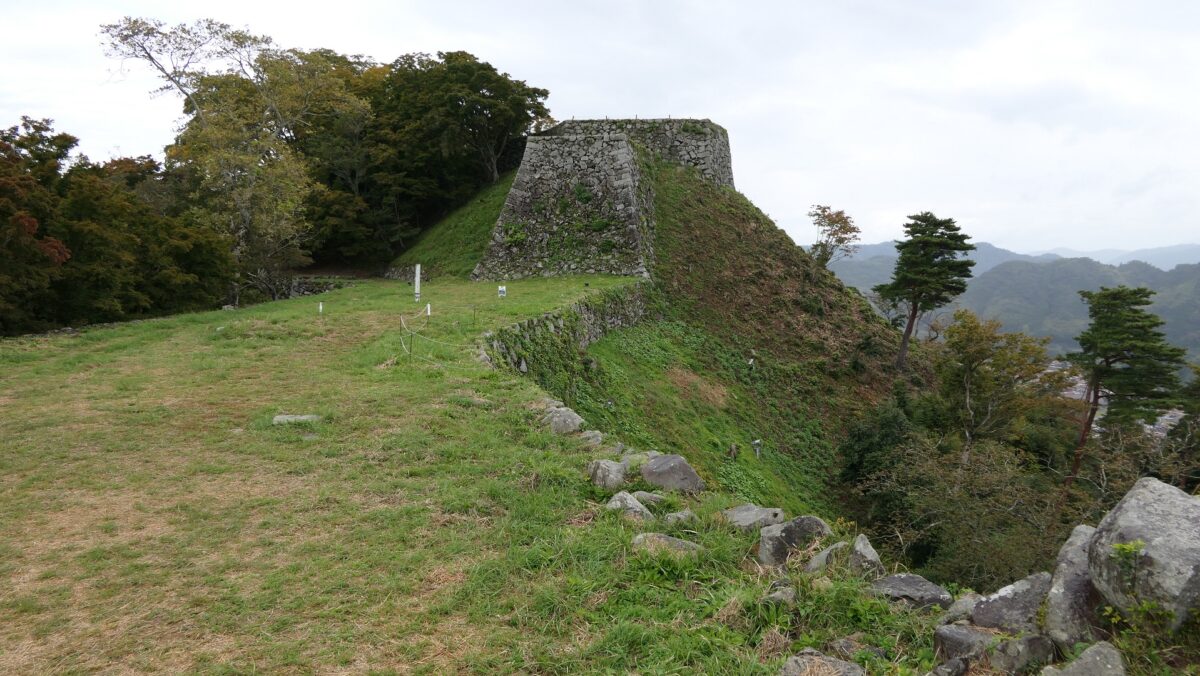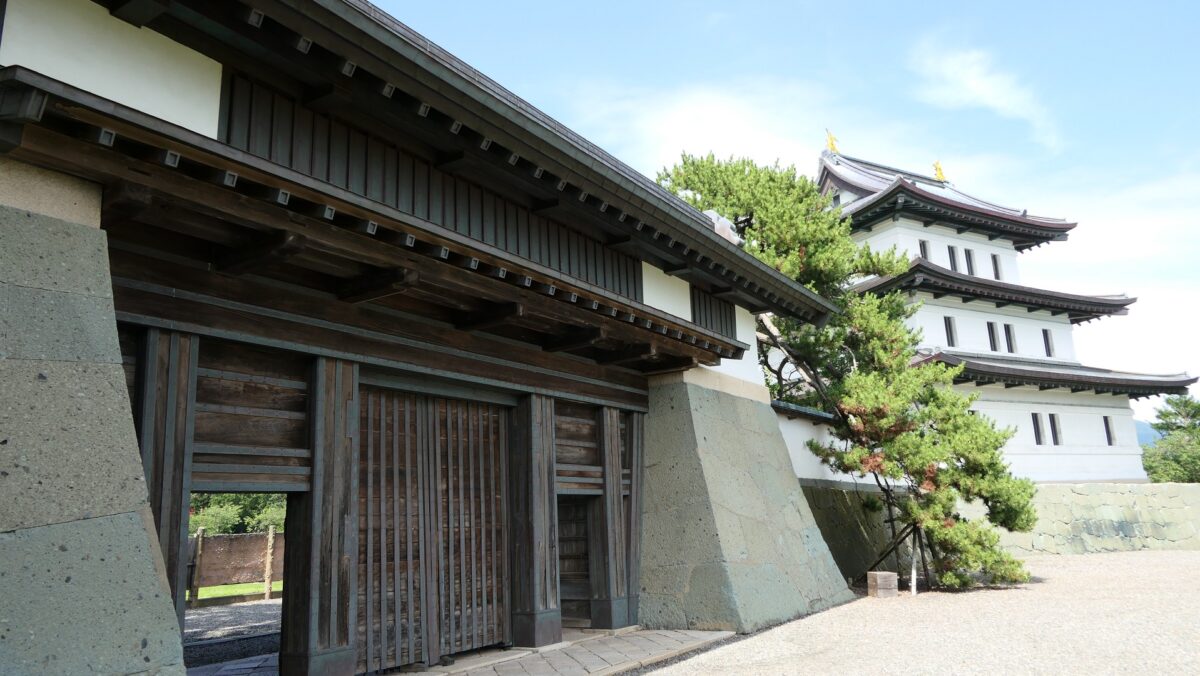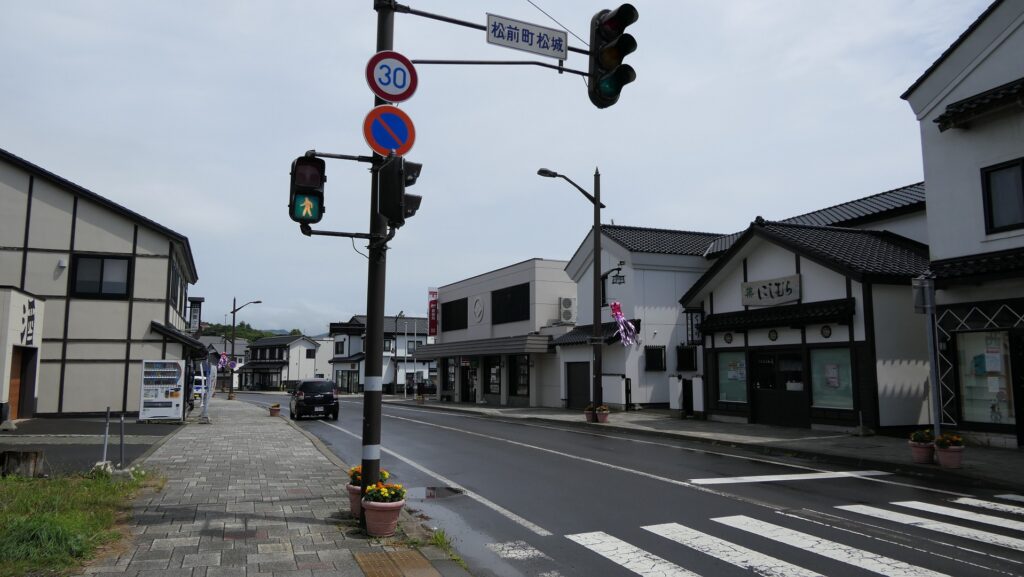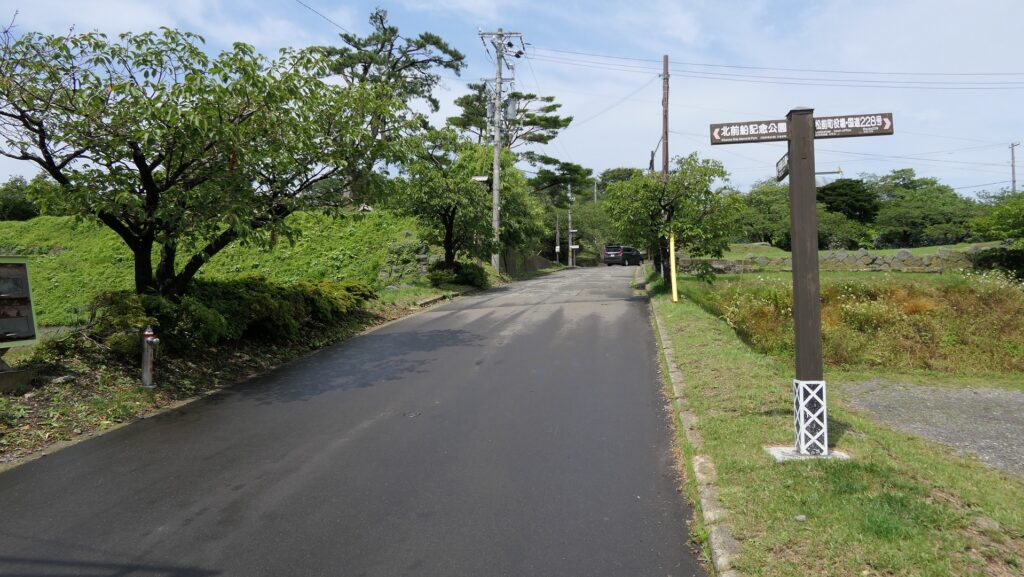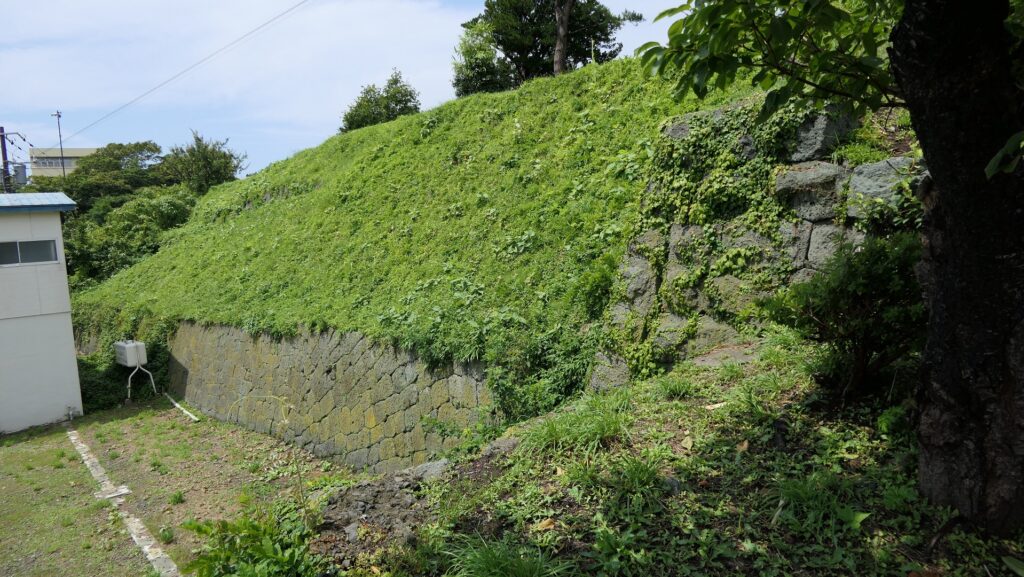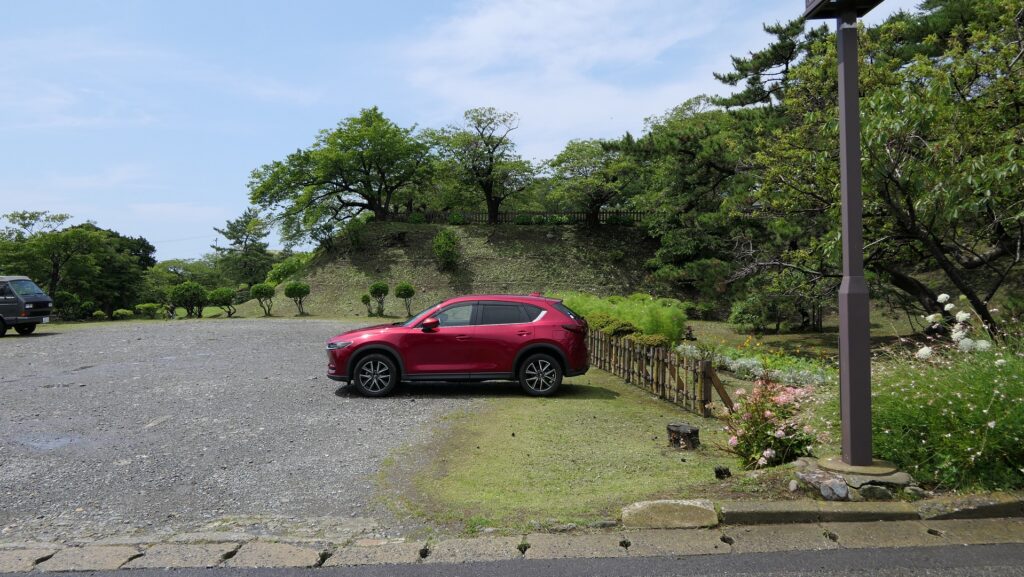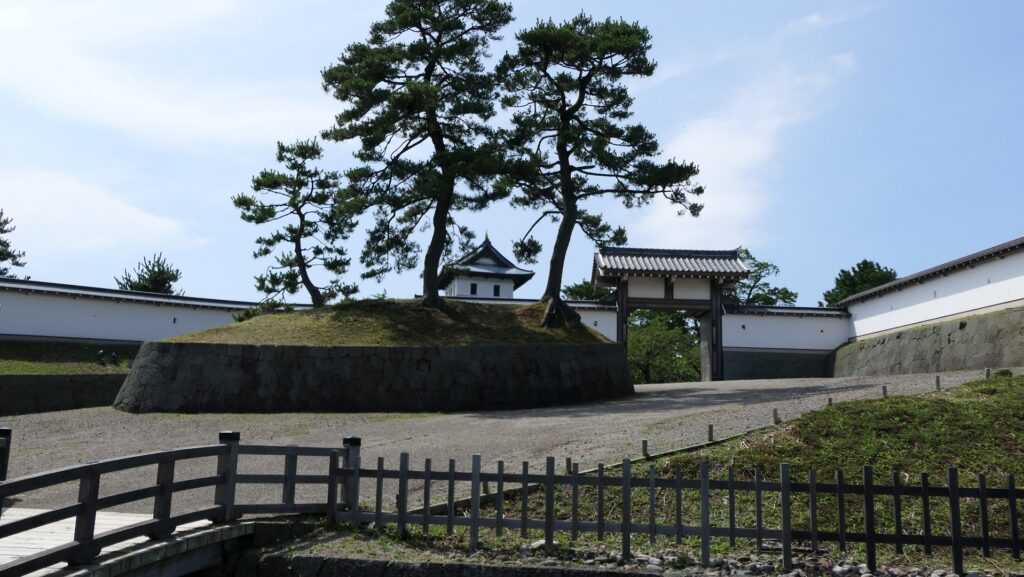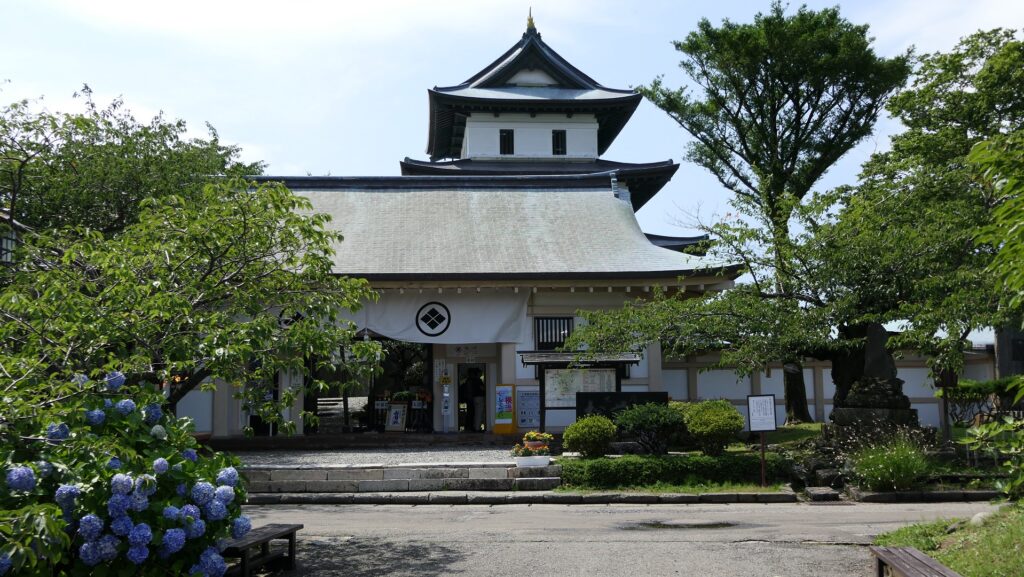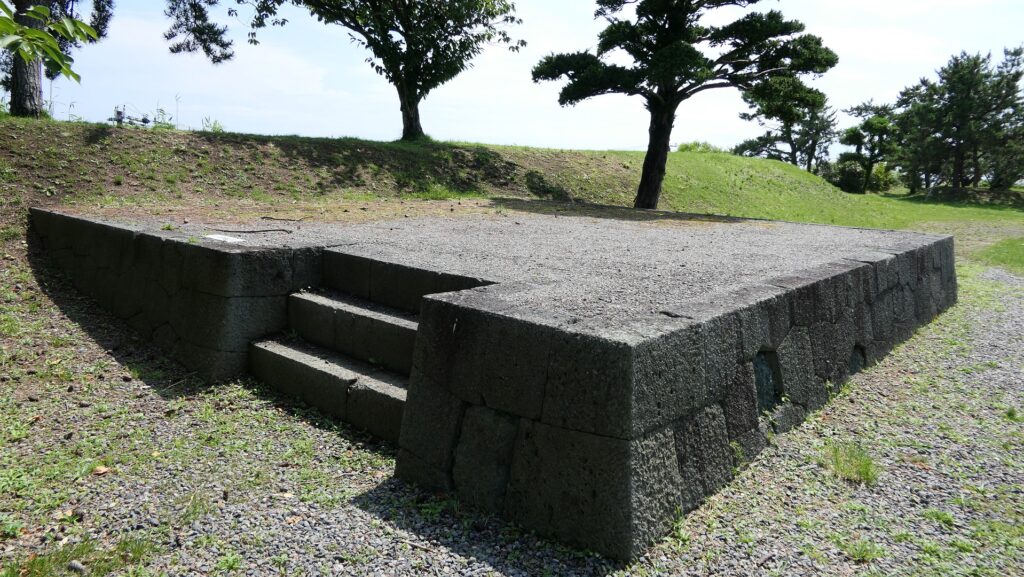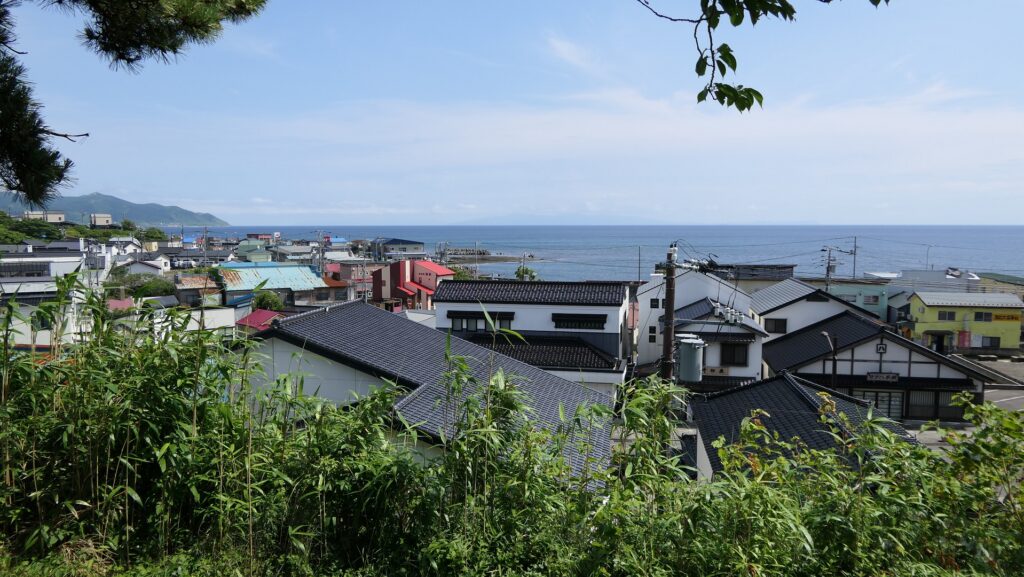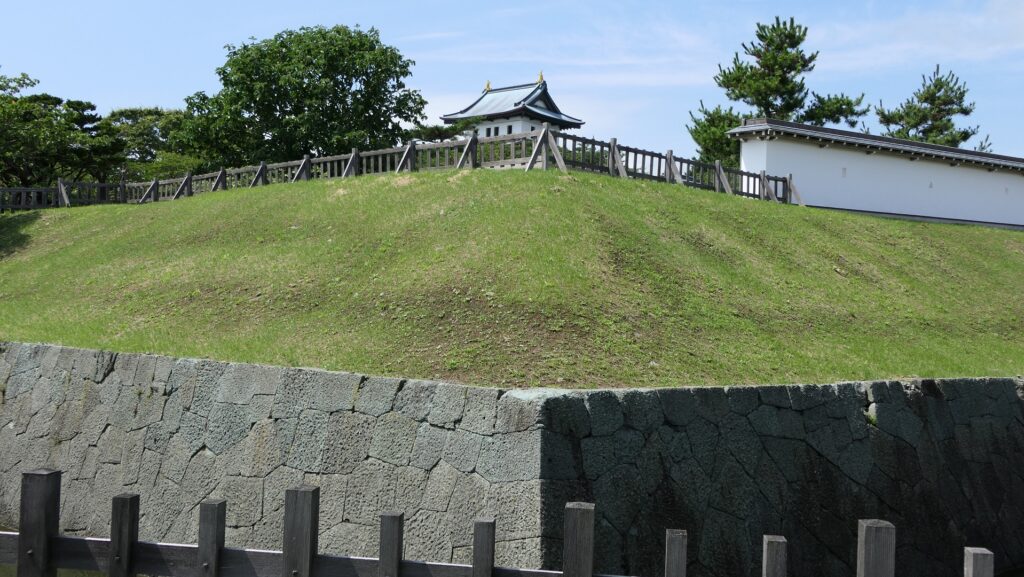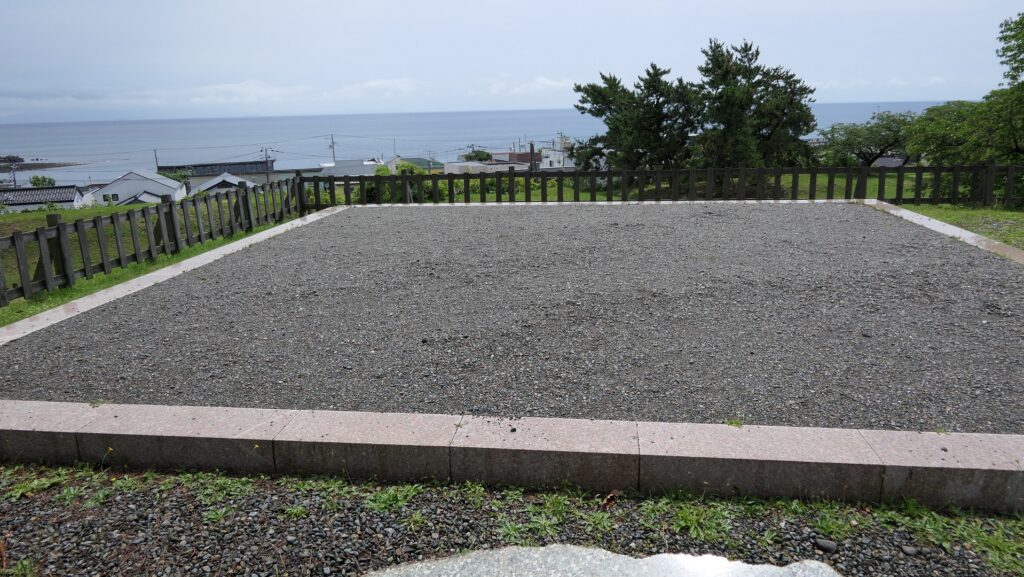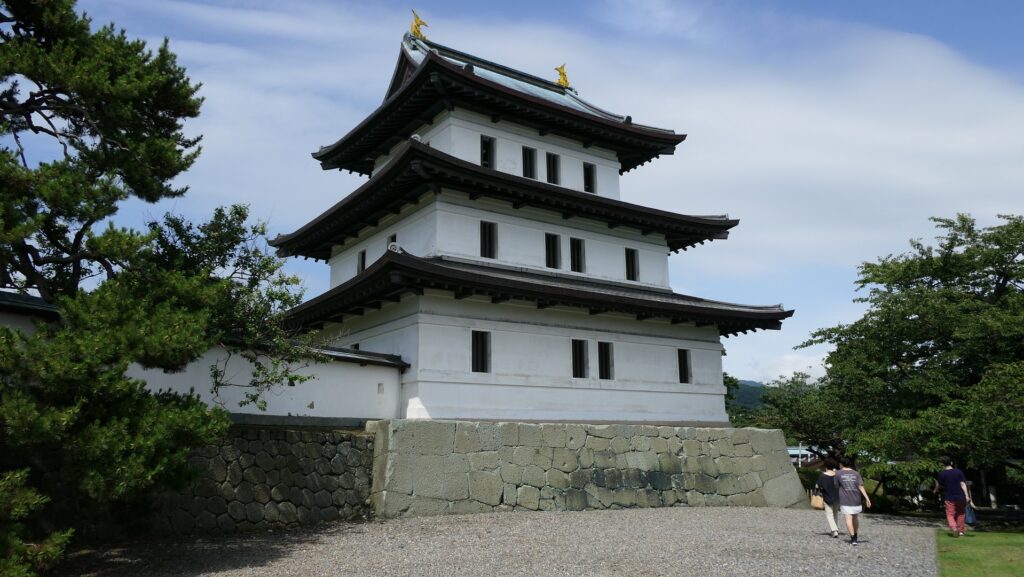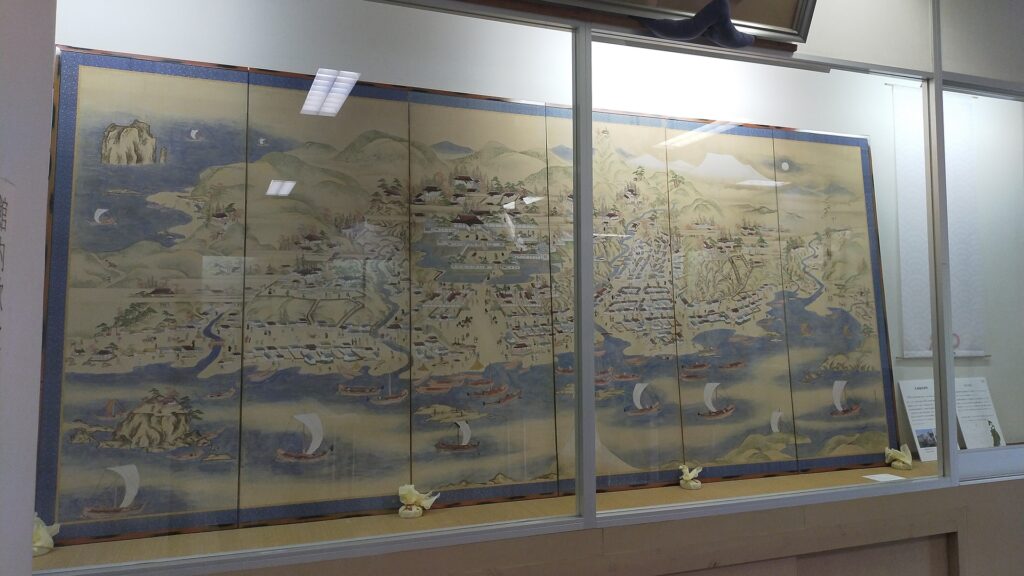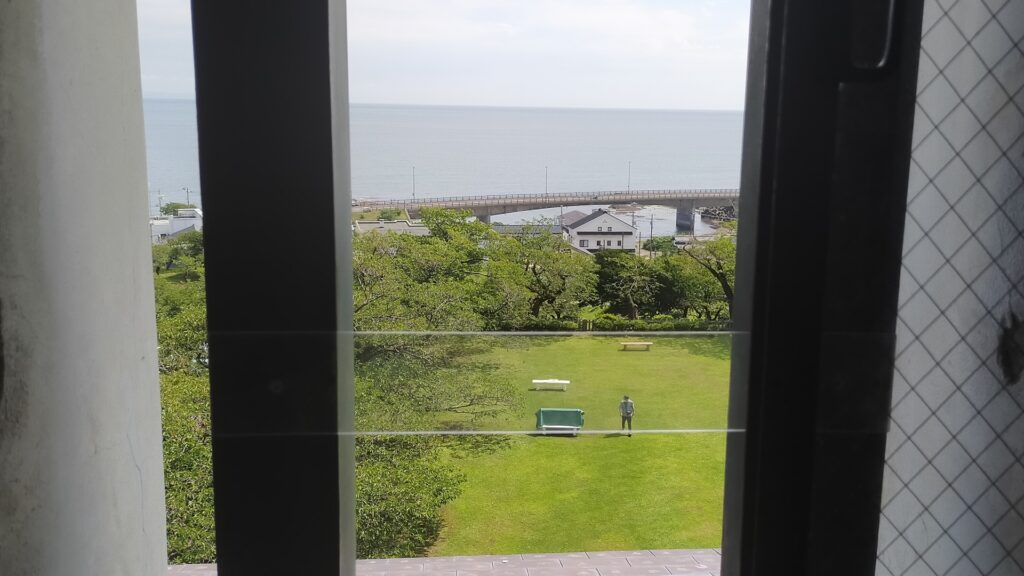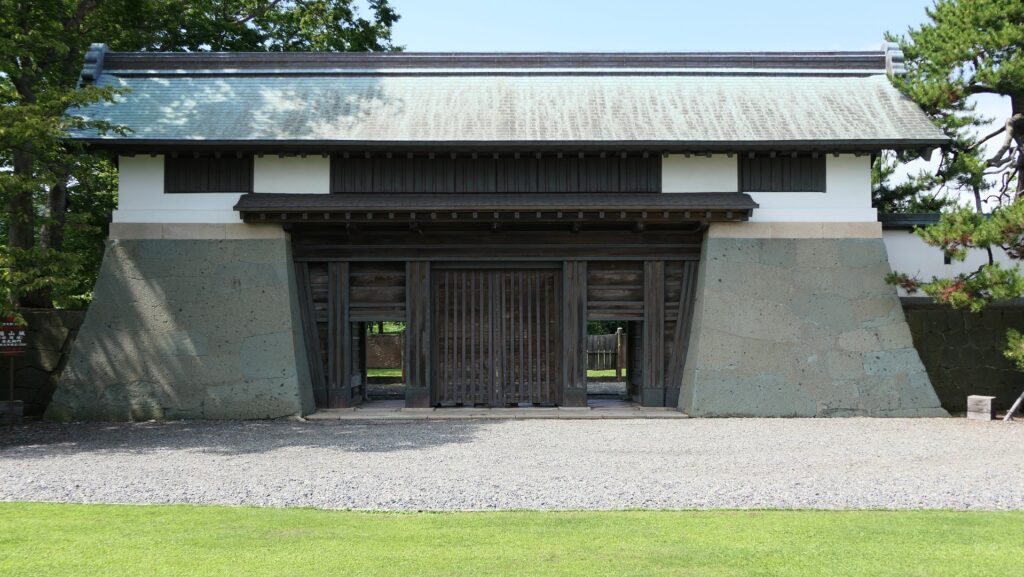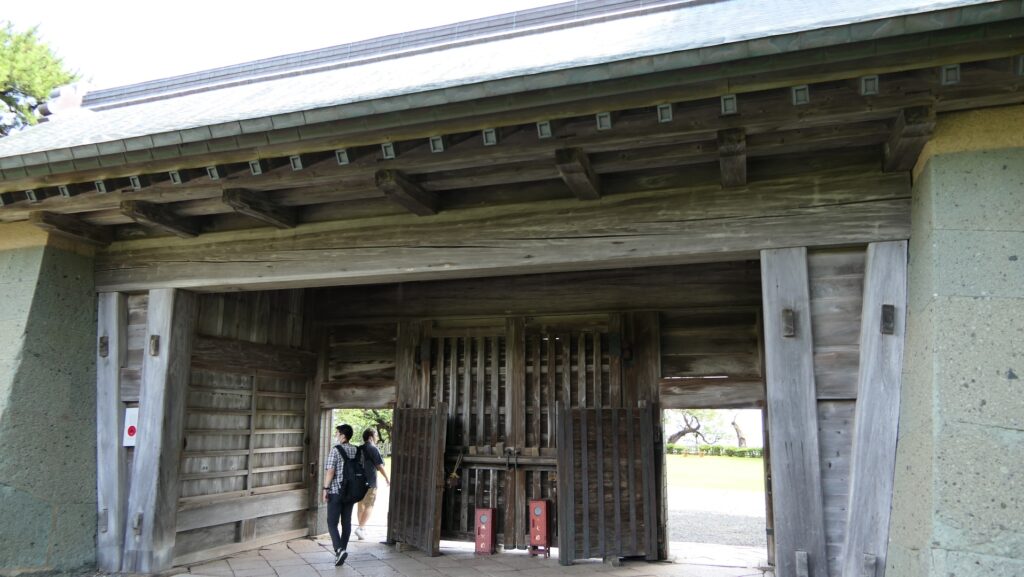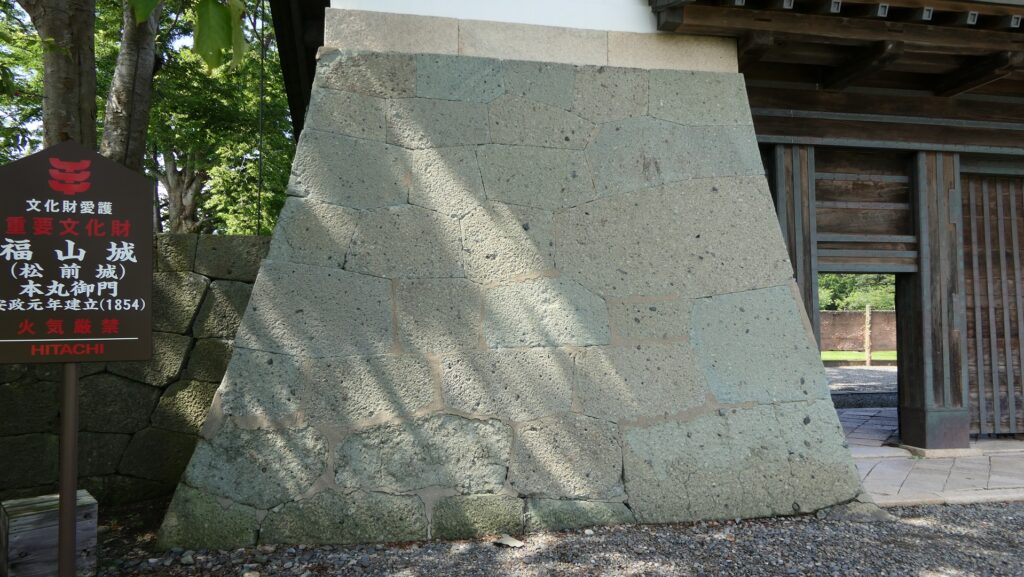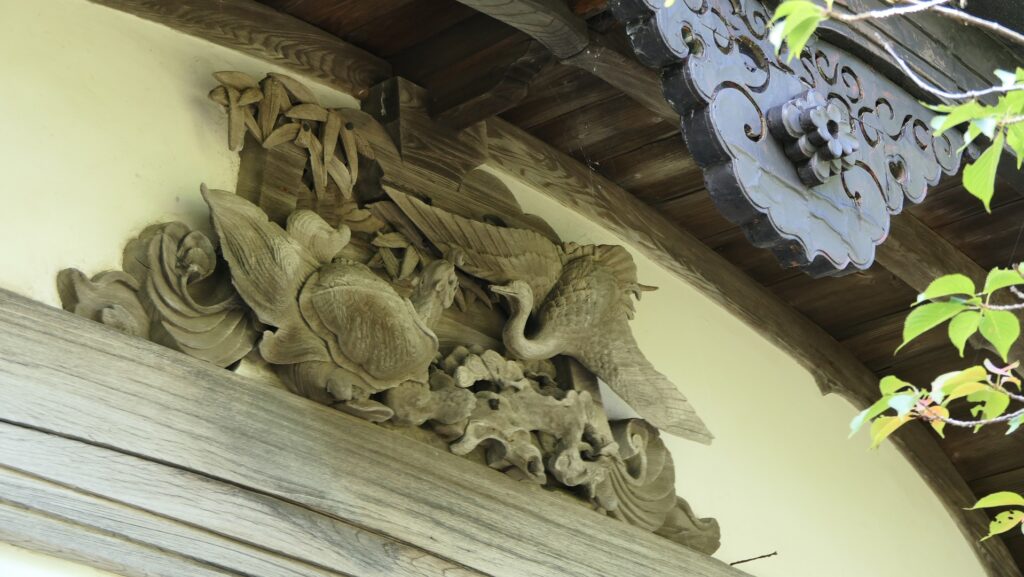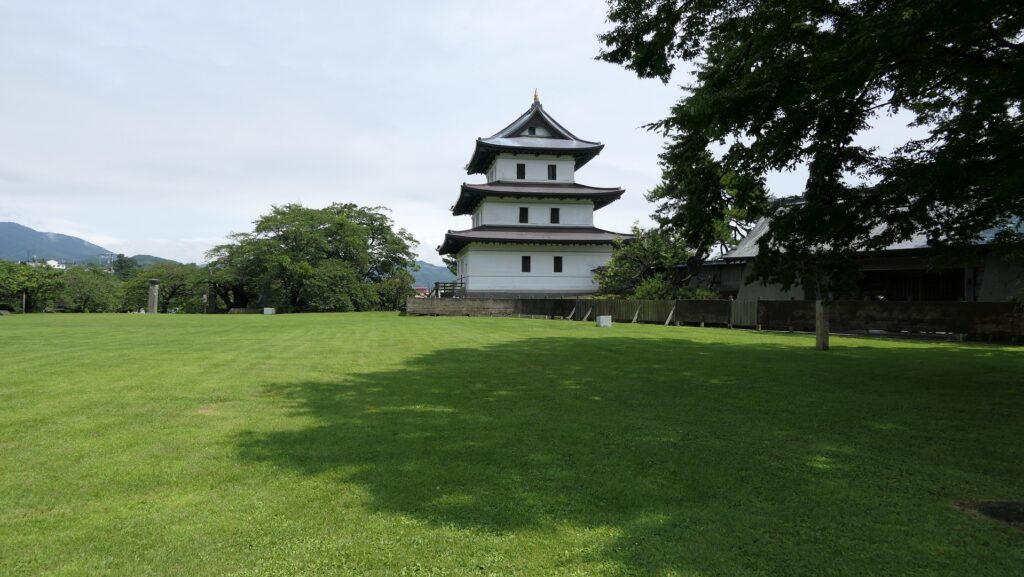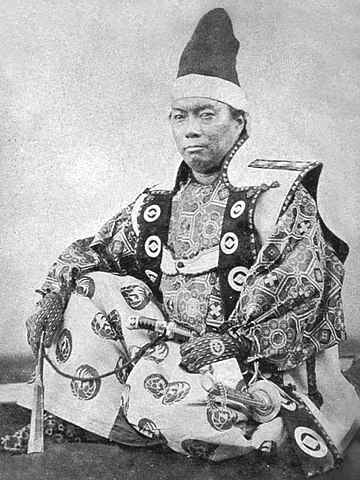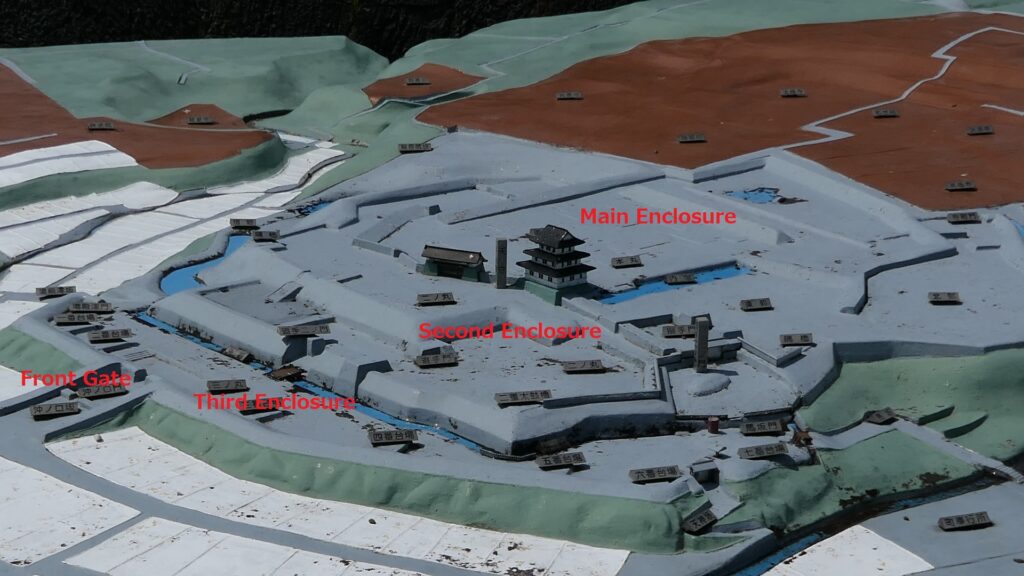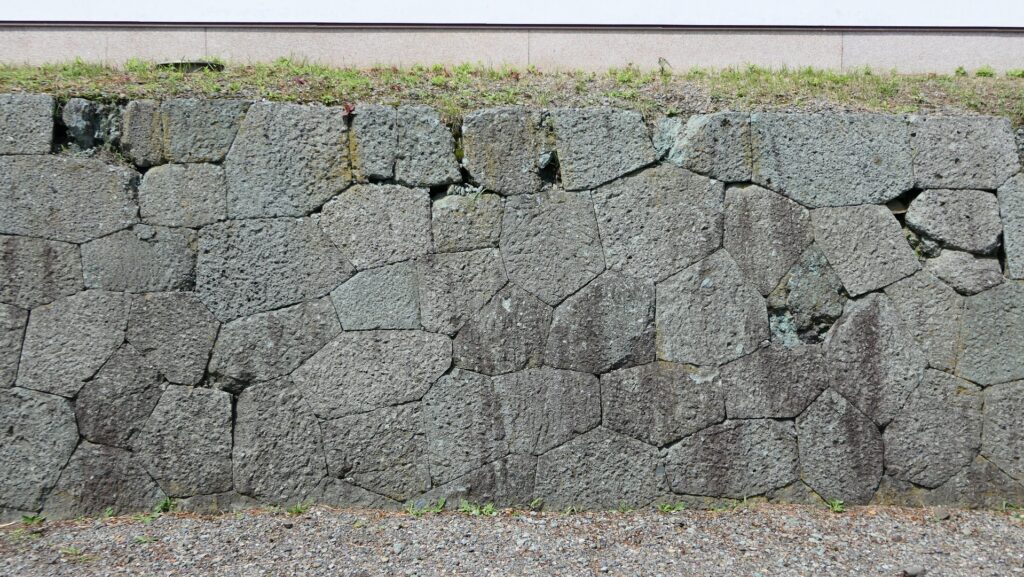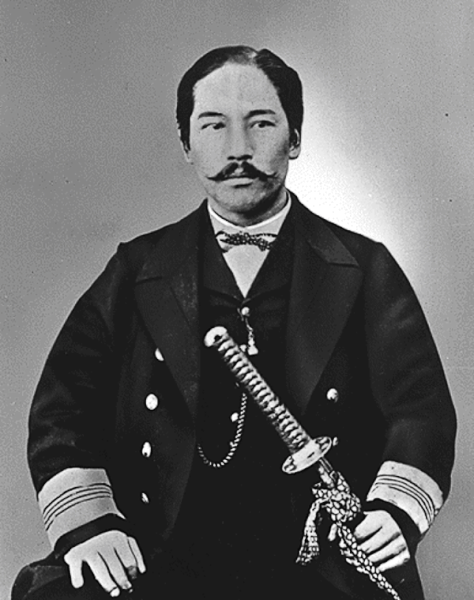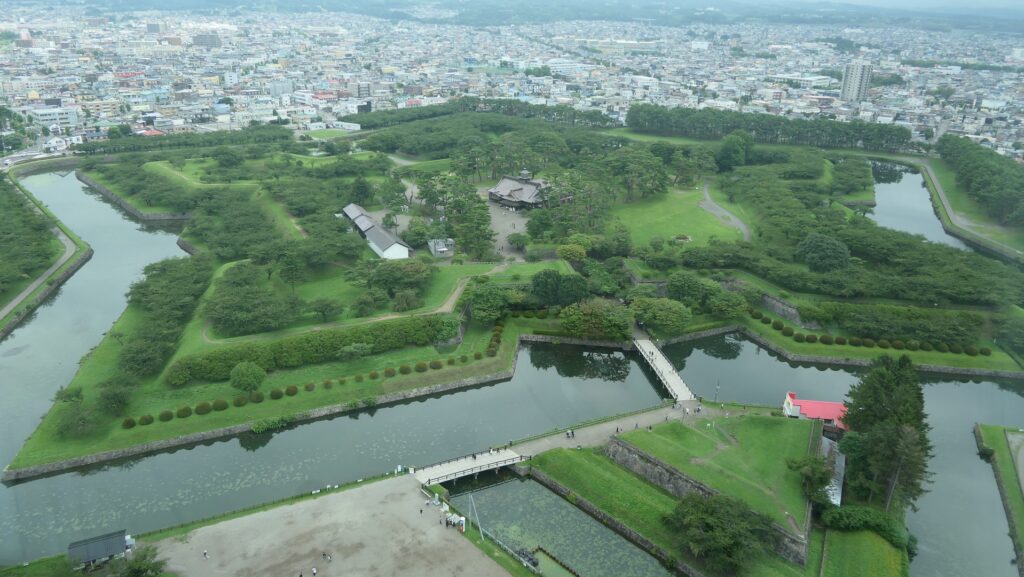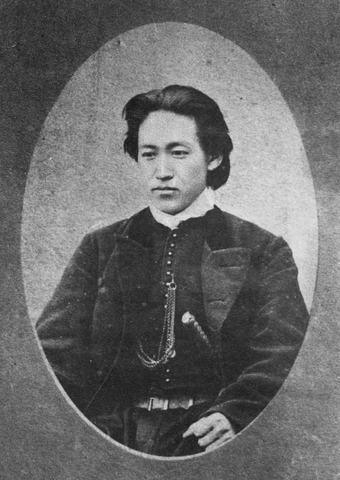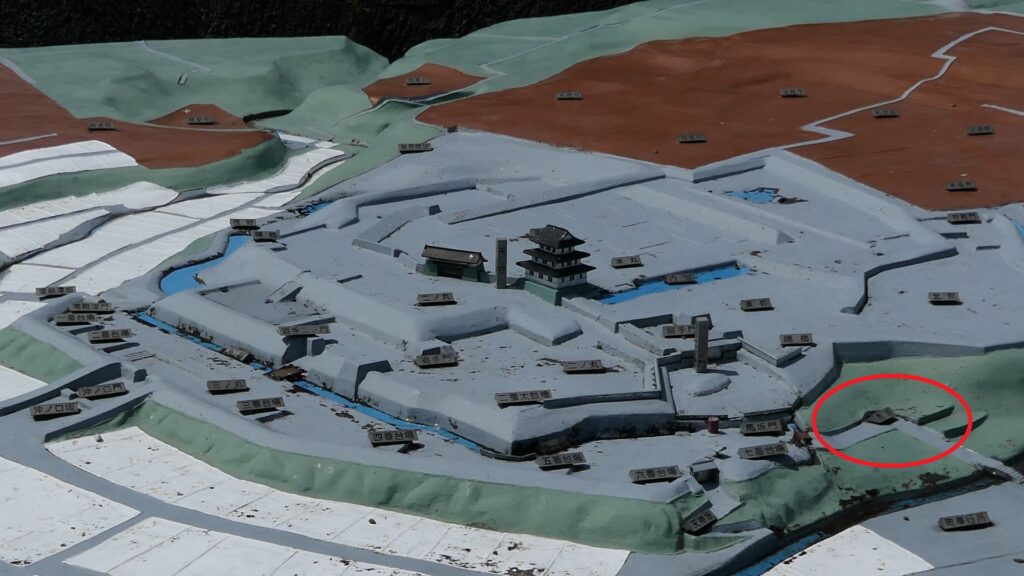Features
Going Castle Ruins through former Castle Town
Today, visiting Tsuwano Town including Tsuwano Castle Ruins is exciting for many visitors. As you get close to the town by car or train, you will see many houses with reddish brown colored roof tiles called Sekishu Rooftiles on them, which can be used to protect people from a cold climate. You will also see the spectacular stone walls on the mountain beside the town, which are a good contrast with the color of the town.

The entrance of the ruins at the foot of the mountain is about 1.5km away from Tsuwano Station if you come by train. Even if you also walk from the station to the ruins, it can be another good tour going through the former castle town. The area around the entrance is where the Main Hall for the lord was built. The hall building was turned into Tsuwano High School and the garden for the hall was turned into a square. Two turrets for the hall are remaining as Babasaki or the Near Riding Ground and Monomi or the Lookout Turrets.
The relief map around the castle

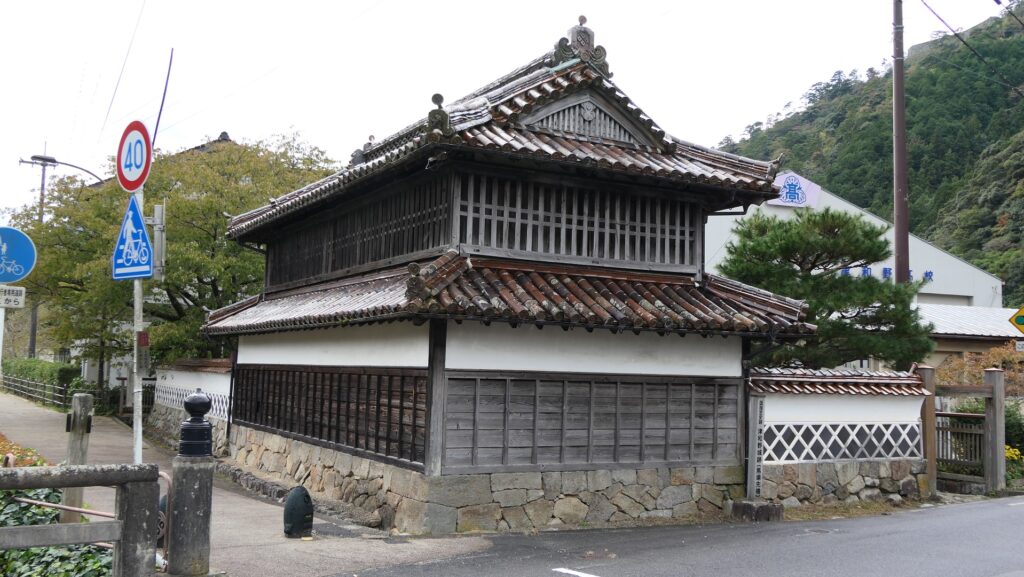
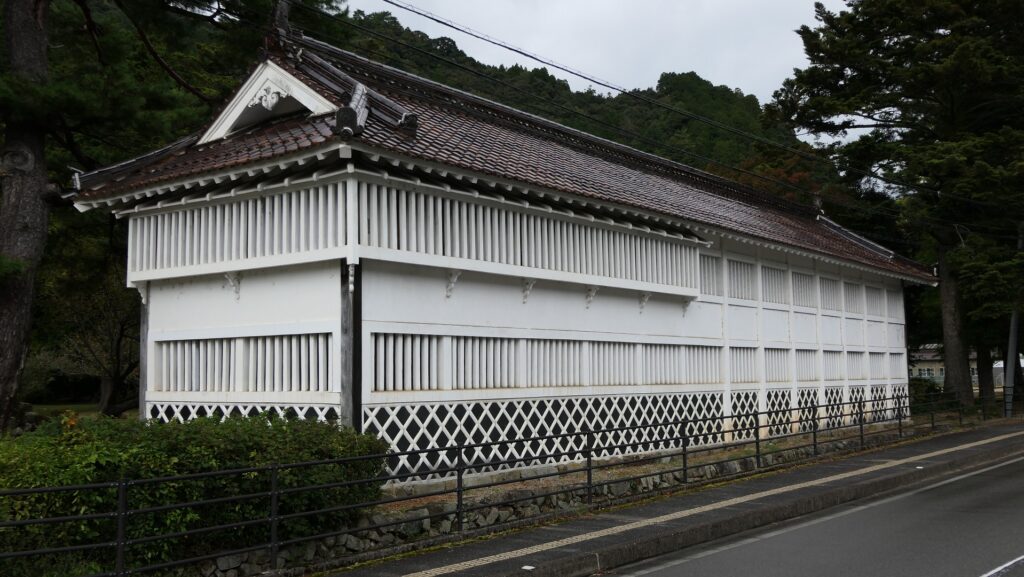
Going to Center of Ruins through Barbican Enclosure
The top of the mountain is about 200m above from the foot, so it would be efficient for visitors to use a lift operated by Tsuwano Town. The lift will take you to the top in few minutes while seeing the steep terrain and the trail for climbing.

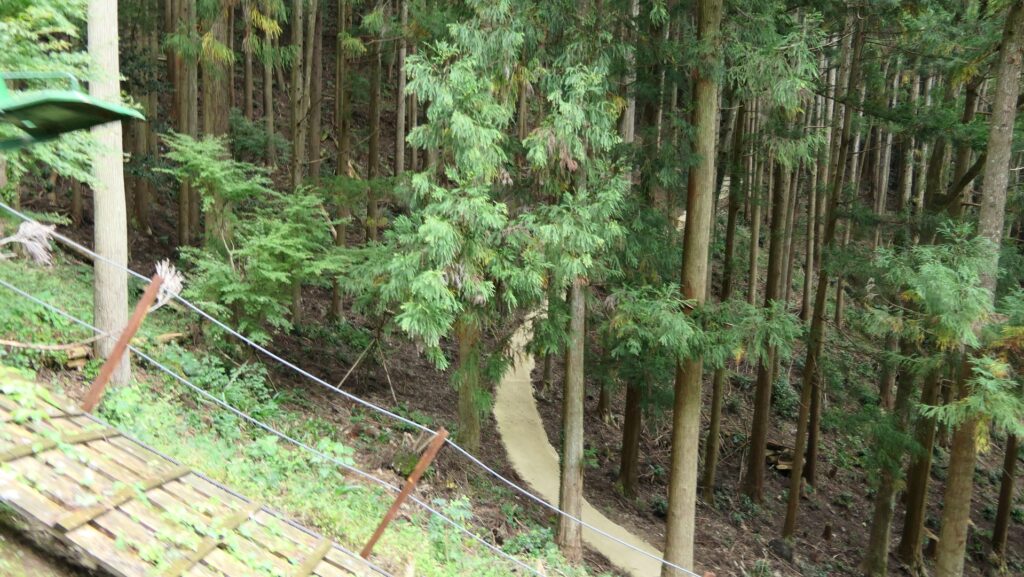
You can walk from the lift platform to the ruins on the trail of the top. You will first arrive at Demaru or the Barbican Enclosure which was used as a lookout, little far from the canter of the castle. There are only remaining stone walls now, but where you can see a great view of the area around. You will next walk to the center on the temporary path probably because the original trail is dangerous or under excavation.
The aerial photo around the castle
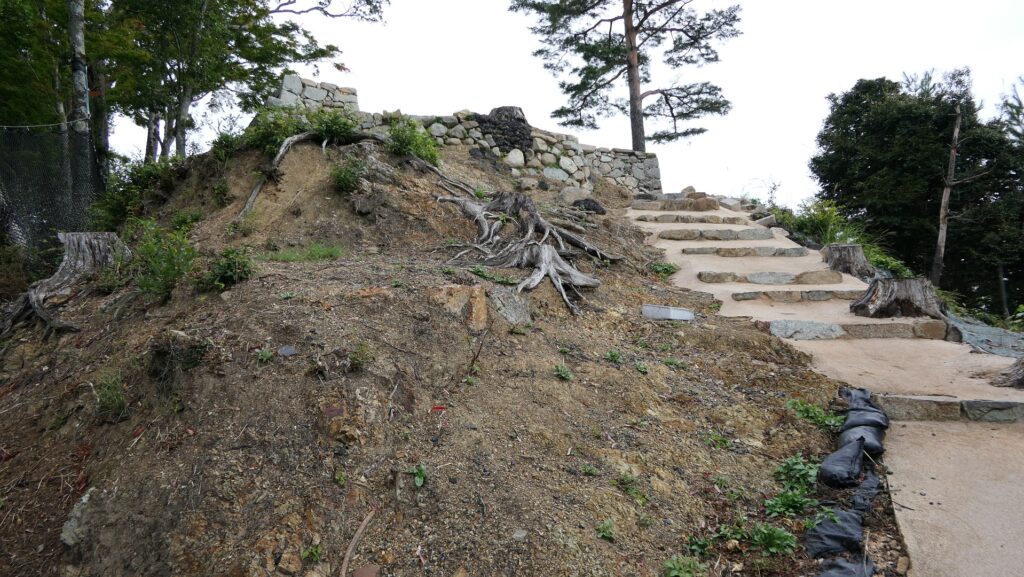
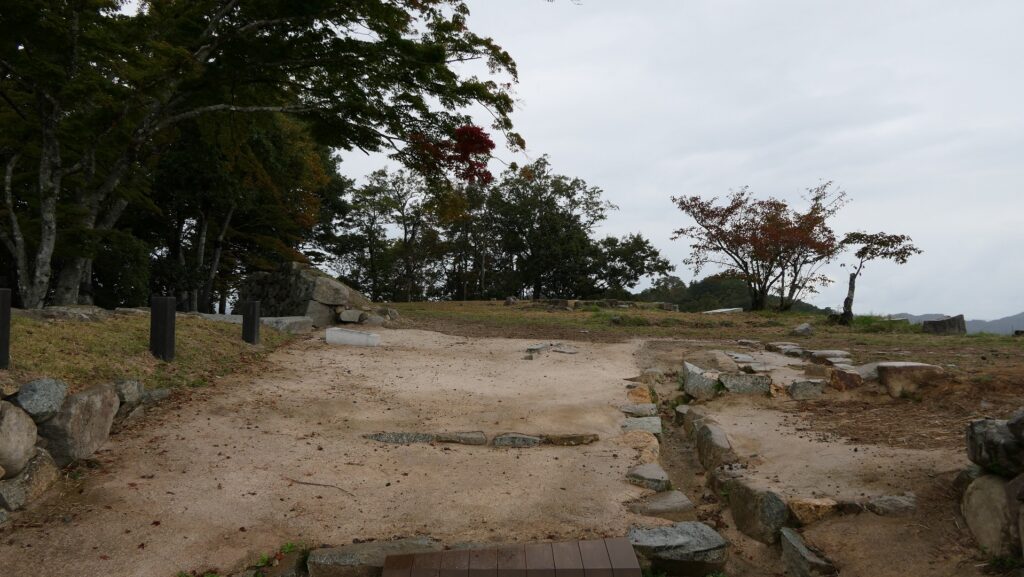

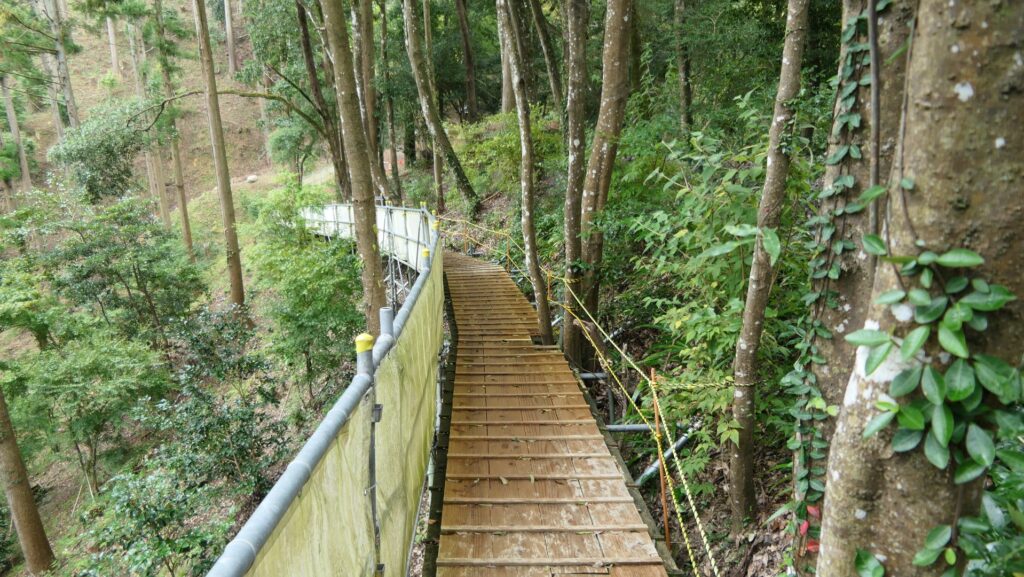
People manage to maintain Stone Walls
You will see the center is still surrounded by the spectacular stone walls but without buildings. Part of them collapsed being covered with sheets to avoid further damage. This was due to the North Yamaguchi Earthquake and the following heavy rain in 1997.
The map around the castle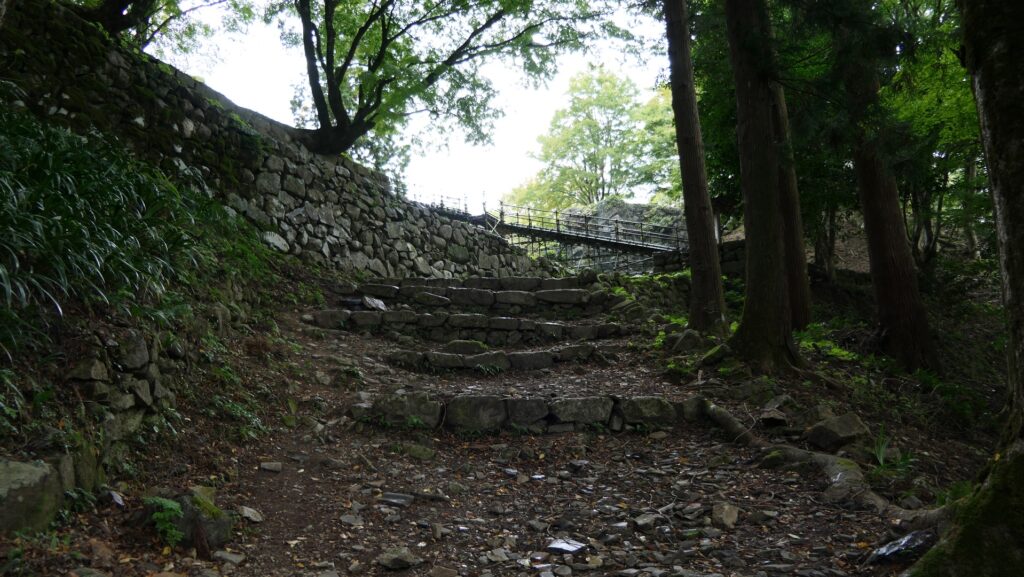

Visitors usually enter the Eastern Gate Ruins also using the temporary steps. You can see the three-tier stone walls on the right, which was used for the Three-Tier Turret in the past. The lower tier is covered by a net to prevent it from collapsing. The other tiers were re-plied in 1972. People in Tsuwano still struggle maintaining these stone walls.

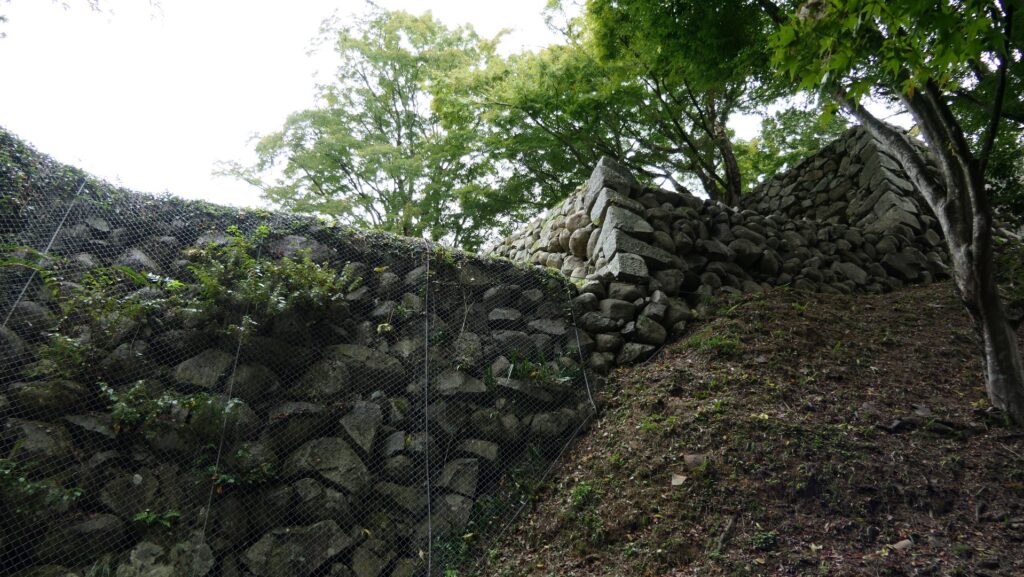
Third Enclosure surrounding Top
The Third Enclosure has other gate ruins on the west and south, surrounding the top of the castle like a belt. If you go to the Western Turret Gate Ruins, you can see unaccountable broken pieces of Sekishu Rooftiles which probably came from the original gate building. Please make sure you don’t take them away from the original positions as they are all included to a National Historic Site.
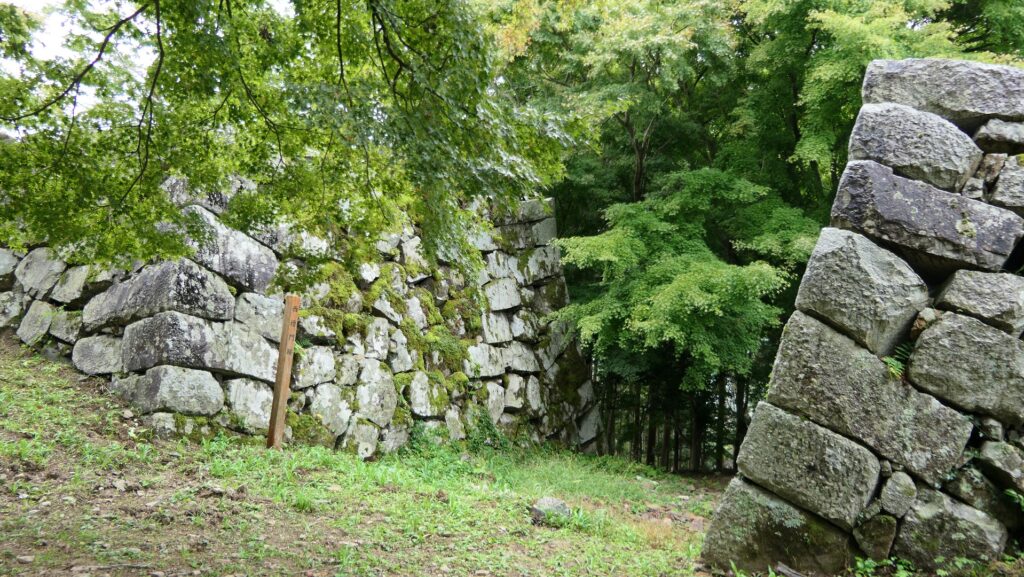
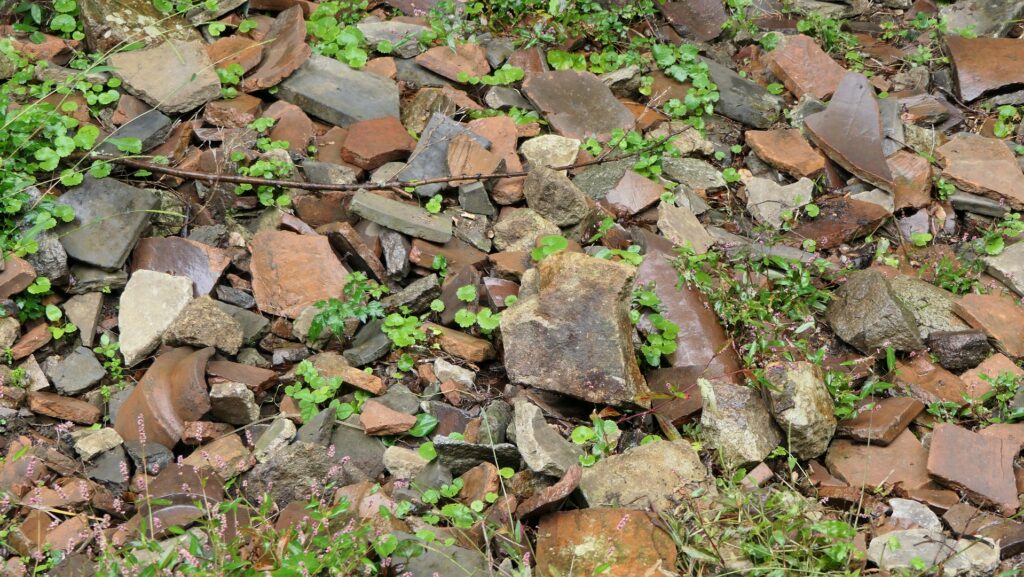
The Southern Turret Gate Ruins are at the edge of a ridge just above a steep cliff. You may be thrilled if you are standing by the edge. The stone walls of the ruins are the oldest in the castle which Naomori Sakazaki originally built.
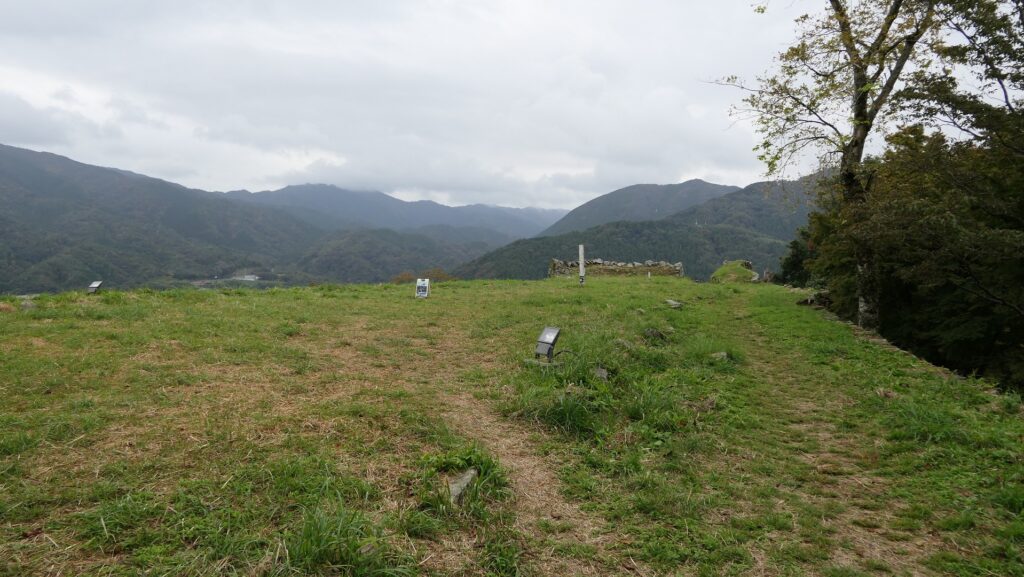

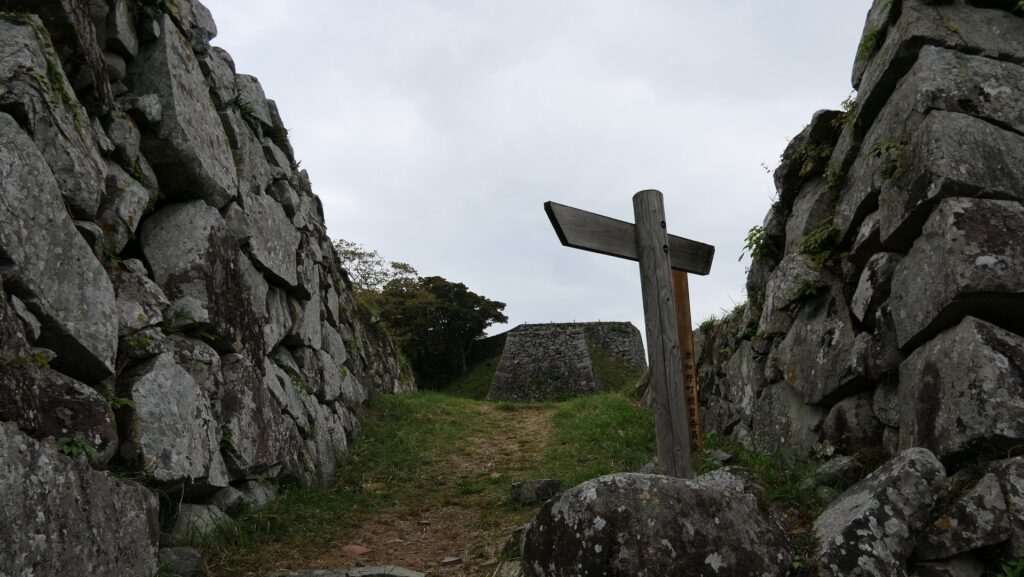

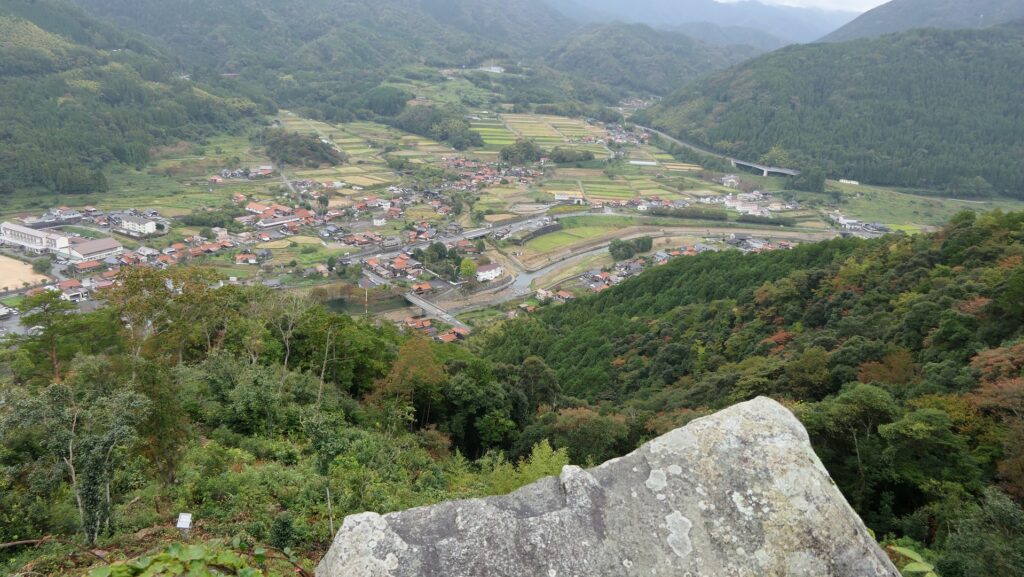
If you look back from the Southern Turret Gate Ruins, you can see the stone wall base for Hitojichi or the Hostage Turret. They are the highest stone walls in the castle and their corner curve lines are beautiful. However, if the turret was really used to hold hostages like its name suggests, they could not escape from it, as the stone walls are isolated.

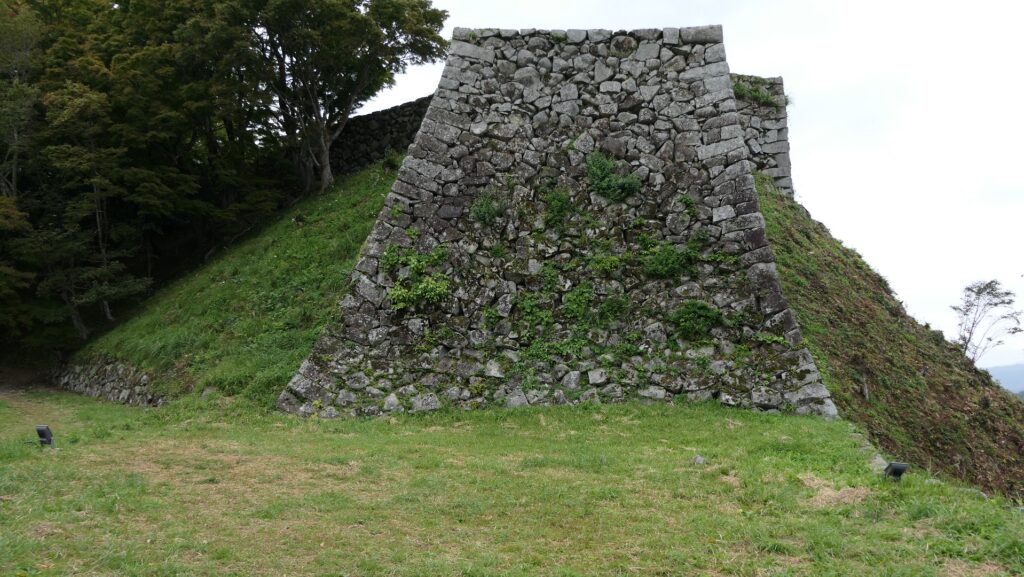
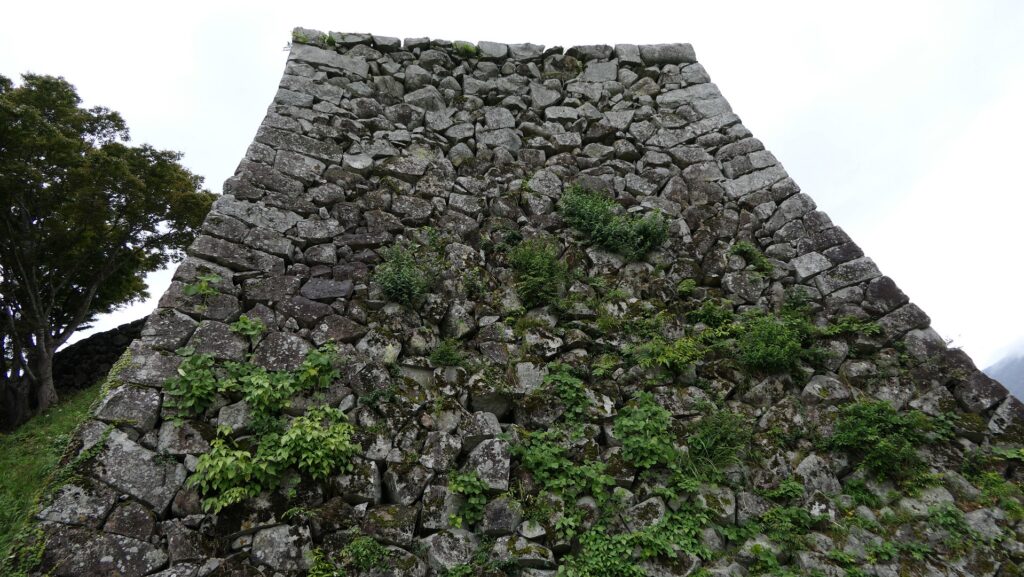
To be continued in “Tsuwano Castle Part3”
Back to “Tsuwano Castle Part1”

